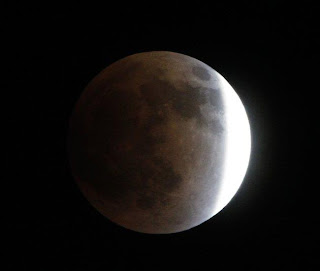"Lost World" Yeti Crab Swarm
An unnamed new species of Yeti crab swarms near hot, mineral-rich hydrothermal vents in the oceans off Antarctica—a newfound "lost world" of strange deep-sea species, scientists say.
(See picture: ""Yeti Crab" Discovered in Deep Pacific.")
A camera-equipped submersible robot filmed species such as barnacles, crabs, anemones, and even an octopus, all of which are mostly colorless and live in utter darkness at depths of 7,875 feet (2,400 meters), according to a new study.
About 2,000 miles (3,200 kilometers) east of the southern tip of South America, "this is a new province of deep-sea life, something like a new continent, and it's a place we've been trying to [reach] for a long time," said study co-author Jon Copley, a marine biologist at the University of Southampton in the United Kingdom.
"It harbors some of the lushest abundance of life I have ever seen in the deep ocean," he said.

Black Smokers of the Lost World
These openings in the Earth's crust, called black smoker chimneys, can spew mineral-rich water as hot as 720 degrees Fahrenheit (382 degrees Celsius).
The minerals, including hydrogen sulfide, provide food for the bottom of the ecosystem's sunless food chain.
Surprisingly, the researchers did not find any shrimp, tubeworms, mussels, or other creatures typically found near hydrothermal vents.
"The new life we're seeing here gives us insights into how animals disperse and evolve in deep ocean," Copley said.
"We can say, OK, the same species here is found elsewhere, while these are missing, so what are the reasons? We can now ask those questions and test ideas."

All That Glitters
A slice of a hydrothermal vent chimney glitters with flecks of pyrite—also called fool's gold, a crystallized form of iron sulfide.
In addition to surveying marine life, researchers cut out pieces of the chimneys and hauled them back to the surface.
"It's important for us as biologists to know the chemistry of these vents," Copley said. "It can help explain why we see some species around particular areas and not others."

Antarctic Anemones in the Pink
These pink anemones (pictured) likely represent a new species, and some are surprisingly large for anemones—roughly the size of a person's palm.
Like other anemones, the animals probably feed by capturing bits of food drifting through the water.
A more diverse array of animals was found along the southern end of the East Scotia Ridge, while the northern end was "rather stygian," Copley said.
"It's more rugged and quite challenging to navigate around," he said. "It's a mystery right now as to why the northern end isn't as lush as the southern."
Antarctic "Car Wash" Barnacles
Snake-like barnacles protrude from rocks in cooler waters near the yeti crab swarms.
At the barnacles' tips are diamond-like heads that appear to filter-feed organic matter floating through the deep-sea oasis.
"We nicknamed one mineral spire covered with these barnacles 'Car Wash,' because it looked like those spinning cylinders you see in a car wash," Copley said.
Ghostly Octopus
One of the rarest finds the team encountered was a 2-foot-long (0.6-meter-long) octopus.
Copley isn't sure what the octopus eats. But the team did manage to film the animals walking around on the sea floor in a weird fashion.
"The back four tentacles sort of shuffle like the treads of a tank, while the front four feel in front of the octopus," Copley said.
"We weren't able to collect any specimens—they were quick and rare—but they're quite possibly a new species.
One Tough Anemone
An unnamed long-tentacled anemone manages to eke out an existence at the fringes of the warm vents.
The average temperature of Antarctica oceans hovers around 32 degrees Fahrenheit (-1.5 degrees Celsius).
Jockeying for Position
Male yeti crabs (such as the one at right) are larger and stay closest to the vents to feed communities of bacteria on their hair-lined bellies.
(Related: "'Yeti' Crabs Farm Food on Own Arms-A First.")
Female yeti crabs stray farther away, into the vent field's cooler water, to protect tiny embryos lining their bellies.
"Unlike the other few species of yeti crab, which wave their arms or dance, these were mostly stationary, but did jockey for position in the warm water," Copley said.
The temperature of the water near the vents is on par with that of the warm tropics, he added.


















































